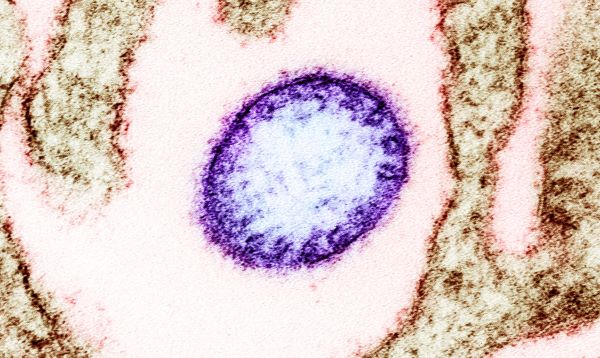Nipah virus (NiV) is an emerging zoonotic virus that has caused outbreaks of severe illness and death in the South-East (SE) Asia Region. While human NiV cases have, to date, been reported only in Bangladesh and India, countries in the Region are at risk wherever there are susceptible animals, presence of the virus, and a pathway for transmission.
The COVID-19 pandemic has revealed and underscored the need for systematic One Health approaches to reducing spillover of pathogens from animals into humans and preventing severe illness and death in humans, domestic animals and wildlife. Within the WHO SE Asia Region, substantial challenges remain in strengthening health systems and pandemic preparedness and response for high threat pathogens such as NiV.
The WHO SE Asia Region Strategy for Nipah Virus Prevention and Control, 2023–2030 was developed to support Member States, especially senior decision-makers and programme managers involved in zoonotic disease control, to prevent illness and death due to NiV. The Strategy is one of several WHO initiatives in the Region to strengthen systems to prevent and control NiV, including a standard operating procedure laboratory manual, NiV disease profile to support systematic risk assessment, prevention and control at the national level, and policy briefs to enable high-level engagement.
The document describes the key components of the Strategy, priority activities for each component, milestones and timelines based on whether countries have reported human cases or not. The key components include the following:
- Improve understanding of the socioecological aspects.
- Enhance policy, strategy and regulatory capacity.
- Increase multisectoral, One Health system capacity and readiness for detection, early warning, and response to cases and outbreaks.
- Enhance risk communication and awareness to reduce spillover and spread.
- Promote research and development.
- Promote behavioural changes to reduce risk.
- Improve control of disease in domestic animals through enhanced biosecurity.
- Increase laboratory diagnostic capability in human, animal and wildlife health sectors.
- Increase surveillance and information-sharing among human, animal and wildlife health sectors.
- Improve clinical diagnosis and case management.
- Develop and improve access to medical countermeasures.
- Ensure resilience.
An eight-year timeframe (2023–2030) has been proposed for Member States in the Region to implement the Strategy, which has been adapted to suit their unique country situations and address their risks and vulnerabilities. The resources and effort allocated to the activities in this Strategy will vary by Member State. The Strategy anticipates that multiple sectors and stakeholders will contribute to activities consistent with a One Health approach. WHO and its Quadripartite partners (Food and Agriculture Organization, World Organization for Animal Health, United Nations Environment Programme) must advocate, promote and support Member States in coordinating across ministries and agencies involved in the prevention and control of zoonoses.
Source: ReliefWeb

















